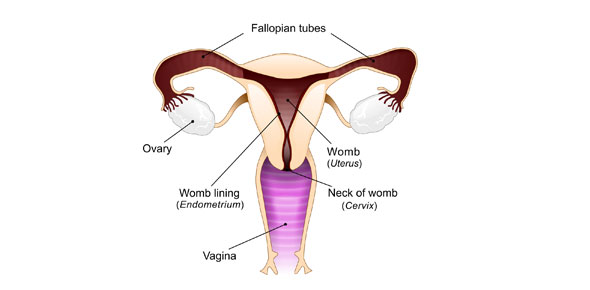Reproductive Systems

Test Banks Reproductive Systems
- 1.
The structure protects and regulates the temperature of the testes
- A.
Dartos muscle
- B.
Cremaster muscle
- C.
Tunica albuginea
- D.
Scrotum
- E.
Tunica vaginalis
Correct Answer
D. Scrotum -
- 2.
This structure is the site of sperm production.
- A.
Vas deferens
- B.
Seminiferous tubules
- C.
Albuginea
- D.
Epididymis
- E.
Raphe
Correct Answer
B. Seminiferous tubules -
- 3.
How many seminiferous tubules are found in the lobules?
- A.
1-3
- B.
50-100
- C.
200-300
- D.
500 or more
- E.
Millions
Correct Answer
A. 1-3 -
- 4.
These cells may eventually become spermatozoa
- A.
Sertoli cells
- B.
Sustentacular cells
- C.
Spermatogenic cells
- D.
Chief cells
- E.
Speciation cells
Correct Answer
C. Spermatogenic cells -
- 5.
These cells secrete testosterone.
- A.
Sertoli cells
- B.
Spermatogenic cells
- C.
Leydig cells
- D.
Oogonia
- E.
Chief cells
Correct Answer
C. Leydig cells -
- 6.
This hormone stimulates Leydig cells to secrete testosterone.
- A.
GnRH
- B.
LH
- C.
FSH
- D.
DHT
- E.
None of the above
Correct Answer
B. LH -
- 7.
The straight tubules in the testis lead into the:
- A.
Efferent ducts
- B.
Afferent ducts
- C.
Rete testis
- D.
Ductus epididymis
- E.
Epididymis
Correct Answer
C. Rete testis -
- 8.
The function of the epididymis is
- A.
Sperm maturation
- B.
Produce sperm
- C.
Speratid storage
- D.
Provide nutrition to sperm
- E.
Absorption of calcium
Correct Answer
A. Sperm maturation -
- 9.
This is formed by the union of the duct from the seminal vesicle and the ampulla of the vas deferens.
- A.
Urtethra
- B.
Spermatic cord
- C.
Inguinal canal
- D.
Ejaculatory duct
- E.
Prostate
Correct Answer
D. Ejaculatory duct -
- 10.
This lies posterior to the bladder and anterior to the rectum and secretes an alkaline, fructose filled fluid.
- A.
Prostate
- B.
Cowper’s glands
- C.
Seminal glands
- D.
Spongy urethra
- E.
Prostatic urethra
Correct Answer
C. Seminal glands -
- 11.
These are located inferior to the prostate on other side of the membranous urethra within the deep muscles of the perineum.
- A.
Cowper’s glands
- B.
Seminal glands
- C.
Ejaculatory ducts
- D.
Urethral ducts
- E.
Prostate
Correct Answer
A. Cowper’s glands -
- 12.
This is composed of three cylindrical masses of erectile tissue each surrounded by a fibrous tissue.
- A.
Testes
- B.
Prostate
- C.
Bladder
- D.
Penis
- E.
Urethra
Correct Answer
D. Penis -
- 13.
This ligament arises from the pubic symphysis in males.
- A.
Fundiform ligament
- B.
Broad ligament
- C.
Suspensory ligament
- D.
Ejaculatory ligament
- E.
Perineum ligament
Correct Answer
C. Suspensory ligament -
- 14.
What is produced by the ovaries?
- A.
Primary oocytes, insulin and estrogen
- B.
Secondary oocytes, progesterone and cortisol
- C.
Tertiary oocytes, insulin and estrogen
- D.
Secondary oocytes, estrogen and progesterone
- E.
Primary oocytes, estrogen and testosterone
Correct Answer
D. Secondary oocytes, estrogen and progesterone -
- 15.
This attaches the ovaries and the uterus to the pelvic wall.
- A.
Broad ligament
- B.
Mesovarium
- C.
Ovarian ligament
- D.
Suspensory ligament
- E.
Hilum
Correct Answer
D. Suspensory ligament -
- 16.
This is the site of fertilization.
- A.
Ureters
- B.
Urethra
- C.
Uterine tubes
- D.
Ovaries
- E.
Vagina
Correct Answer
C. Uterine tubes -
- 17.
This is the portion of the uterus that opens into the vagina.
- A.
Urethra
- B.
Cervix
- C.
Uterine tubes
- D.
Inguinal canal
- E.
Ovaries
Correct Answer
B. Cervix -
- 18.
Anterior to the vagina and urethral openings is the
- A.
Labia majora
- B.
Labia minor
- C.
Mons pubis
- D.
Cervical sphincter
- E.
Labial frenulum
Correct Answer
C. Mons pubis -
- 19.
Skene’s glands secrete
- A.
Estrogen
- B.
Progesterone
- C.
Testosterone
- D.
Androgens
- E.
Mucus
Correct Answer
E. Mucus -
- 20.
________ hormone secreted by the ____________ controls the ovarian and uterine cycles.
- A.
FSH, anterior pituitary
- B.
LH, anterior pituitary
- C.
GnRH, hypothalamus
- D.
HGH, hypothalamus
- E.
Estrogens, ovaries
Correct Answer
C. GnRH, hypothalamus -
- 21.
This hormone promotes spermatogenesis.
- A.
Relaxin
- B.
Testosterone
- C.
Inhibin
- D.
Estrogen
- E.
Aldosterone
Correct Answer
B. Testosterone -
- 22.
This hormone triggers ovulation.
- A.
GnRH
- B.
LH
- C.
FSH
- D.
Estrogen
- E.
Progesterone
Correct Answer
B. LH -
- 23.
This is secreted by the corpus luteum after ovulation.
- A.
Progesterone
- B.
Relaxin
- C.
LH
- D.
FSH
- E.
HGH
Correct Answer
A. Progesterone -
- 24.
The is the uterine phase when the endometrium becomes more vascular.
- A.
Menstrual phase
- B.
Preovulatory phase
- C.
Proliferative phase
- D.
Follicular phase
- E.
Postovulatory phase
Correct Answer
C. Proliferative phase -
- 25.
The is the ovarian phase between the end of menstruation and beginning of ovulation.
- A.
Menstrual phase
- B.
Preovulatory phase
- C.
Proliferative phase
- D.
Follicular phase
- E.
Postovulatory phase
Correct Answer
B. Preovulatory phase -
Quiz Review Timeline +
Our quizzes are rigorously reviewed, monitored and continuously updated by our expert board to maintain accuracy, relevance, and timeliness.
-
Current Version
-
Feb 15, 2013Quiz Edited by
ProProfs Editorial Team -
Apr 28, 2012Quiz Created by
Mywickedream
 Back to top
Back to top


